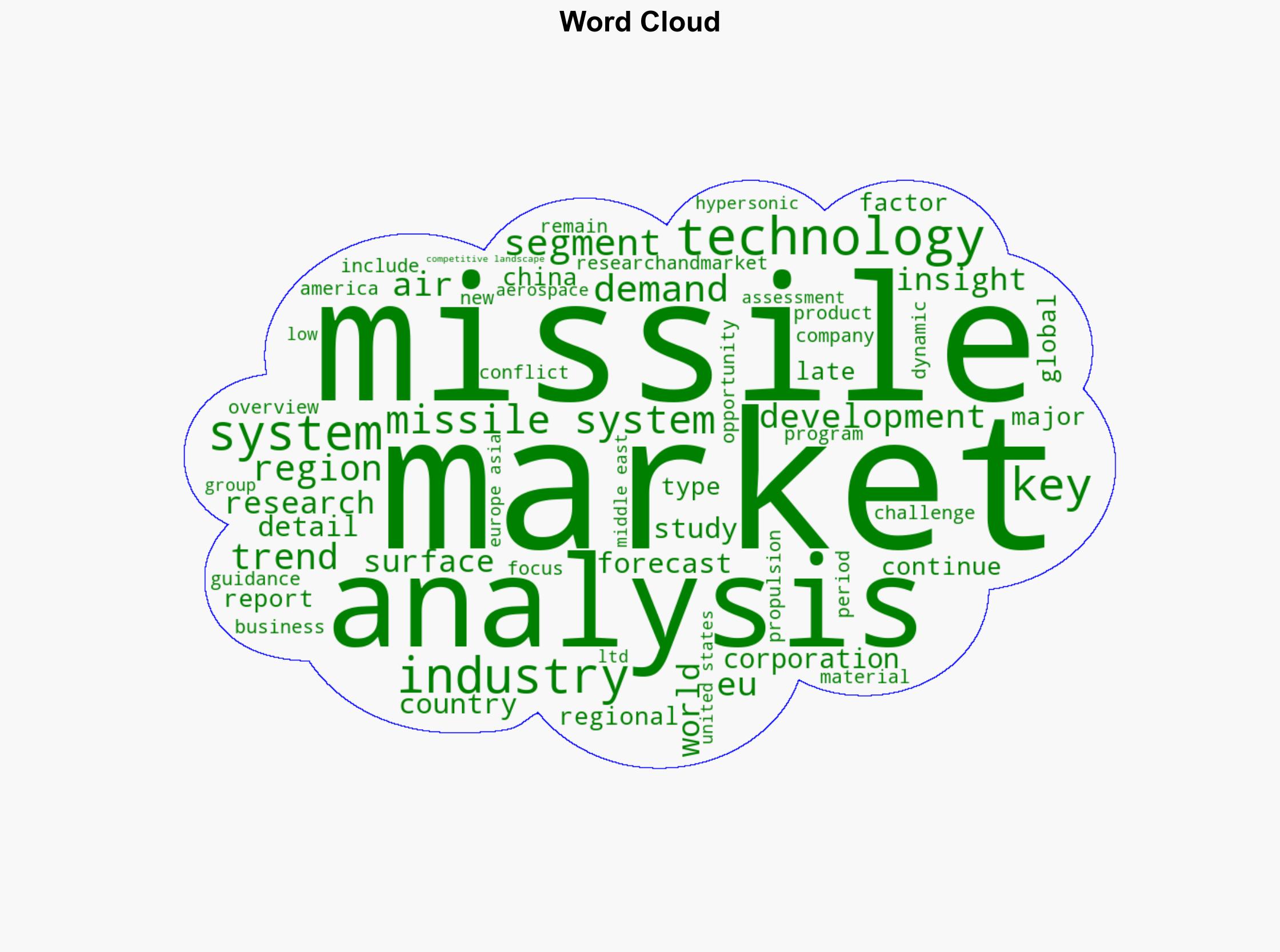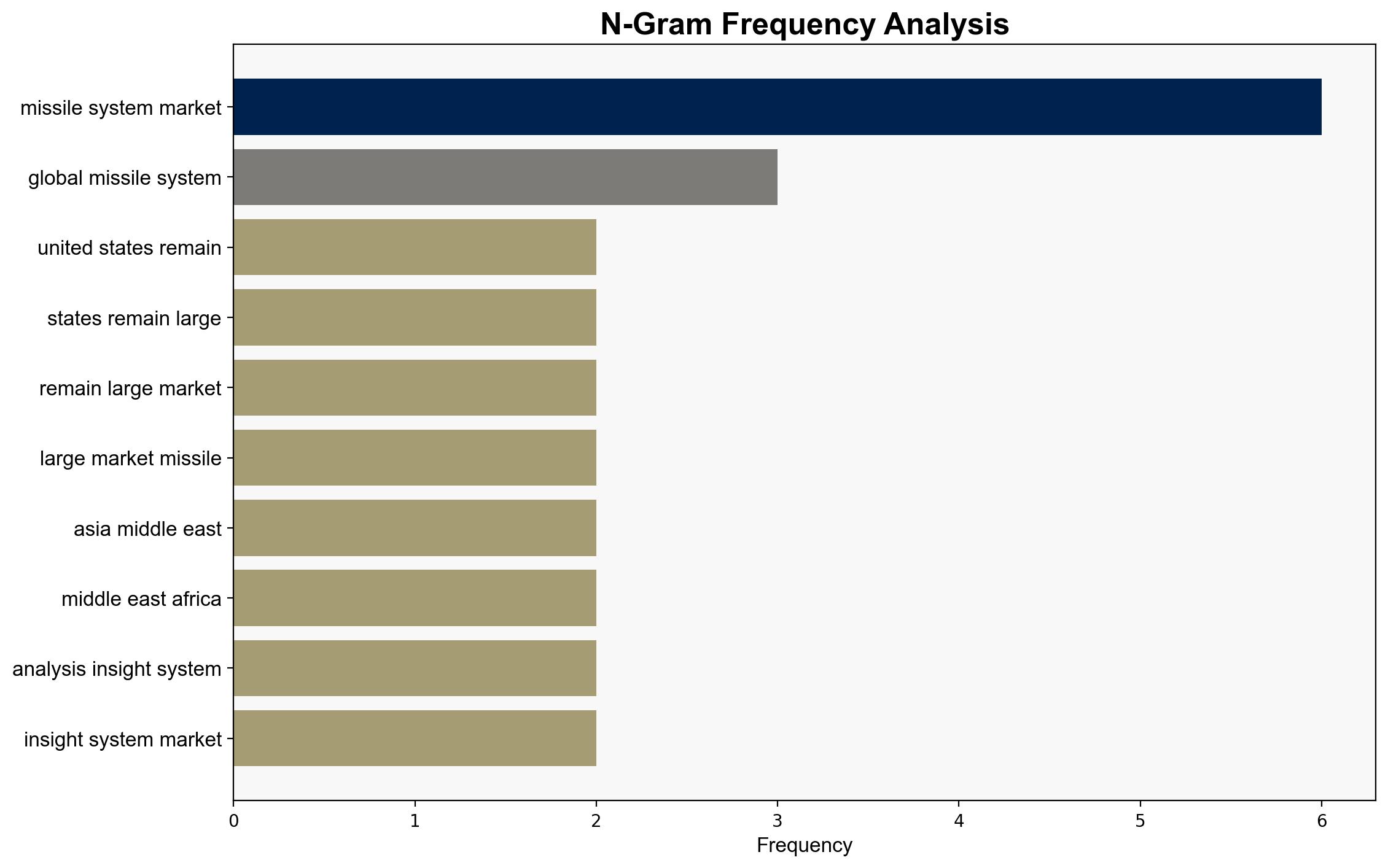Trends and Strategies Shaping the Missiles Industry 2025-2033 Strategic Insights Reveal Increasing Expenditure and New Tech as Core Drivers – GlobeNewswire
Published on: 2025-10-31
Intelligence Report: Trends and Strategies Shaping the Missiles Industry 2025-2033 Strategic Insights Reveal Increasing Expenditure and New Tech as Core Drivers – GlobeNewswire
1. BLUF (Bottom Line Up Front)
The missile industry is poised for significant growth driven by increased global expenditure and technological advancements. The most supported hypothesis suggests that the United States, China, and the European Union will dominate the market, leveraging new technologies to maintain military superiority. Confidence Level: High. Recommended action includes strategic investments in emerging technologies and strengthening alliances to counterbalance potential adversaries.
2. Competing Hypotheses
Hypothesis 1: The United States, China, and the European Union will lead the missile market, driven by technological advancements and increased military budgets. This is supported by robust demand and strategic investments in new missile technologies.
Hypothesis 2: Emerging markets in Asia and the Middle East will experience the most significant growth in missile capabilities due to regional conflicts and increased defense spending. This hypothesis considers the geopolitical tensions and regional arms races as primary drivers.
Using ACH 2.0, Hypothesis 1 is better supported due to the historical precedence of technological leadership and budget allocations in these regions.
3. Key Assumptions and Red Flags
Assumptions include the continuation of current geopolitical tensions and the availability of funding for defense budgets. A red flag is the potential underestimation of technological advancements in emerging markets, which could shift the balance of power. Additionally, there is a risk of cognitive bias towards established markets, potentially overlooking rapid developments elsewhere.
4. Implications and Strategic Risks
The expansion of missile capabilities could lead to an arms race, increasing regional instability. Economic implications include the reallocation of resources towards defense spending at the expense of other sectors. Cybersecurity risks are heightened as missile systems become more technologically advanced, requiring robust countermeasures. Geopolitically, alliances may shift as countries seek to balance power dynamics.
5. Recommendations and Outlook
- Invest in research and development of missile defense systems to counter emerging threats.
- Strengthen international alliances and intelligence-sharing agreements to monitor and mitigate risks.
- Scenario-based projections:
- Best Case: Technological advancements lead to enhanced global security through effective deterrence.
- Worst Case: An arms race escalates into open conflict, destabilizing regions.
- Most Likely: Gradual increase in missile capabilities with periodic regional tensions.
6. Key Individuals and Entities
While specific individuals are not mentioned, key entities include major defense contractors and government defense departments in the United States, China, and the European Union.
7. Thematic Tags
national security threats, cybersecurity, counter-terrorism, regional focus





